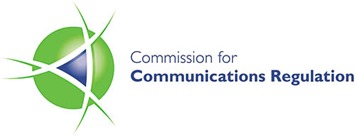Delivering benefits from competition
 Kevin O’Brien, Commissioner with the Commission for Communications Regulation, outlines its work on delivering next generation networks and the need for consumers to benefit from a changing and increasingly competitive market.
Kevin O’Brien, Commissioner with the Commission for Communications Regulation, outlines its work on delivering next generation networks and the need for consumers to benefit from a changing and increasingly competitive market.
Our focus in telecoms is on competition and investment and we now find ourselves in an improved position in both areas. This is due to regulation, changes in technology and the impact of competition over time.
Last year, one of our most significant decisions in relation to the fixed line sector was the approval of the framework for eircom’s generation networks programme. eircom was aware that it had to invest heavily in the access network, in order to increase speed, and its national fibre broadband network was opened up to the public on 20 May 2013. As eircom has significant market power in the residential broadband and fixed line markets, its products and the basis for its investments are closely regulated by ComReg.
This critical decision attracted a huge focus from industry, notably from eircom but also from other operators such as Vodafone, Sky, Magnet, IFA and BT, which re-sell eircom’s network. The decision needed to allow eircom to go ahead and invest with the adequate incentives and, equally, improve the access to eircom’s network for all other operators.
The decision has been accepted by industry and involved a considerable work by ComReg in terms of consultation and our NGA forum which enables industry stakeholders to discuss the relevant issues.
eircom is now building its next generation network and has announced that it intends to reach at least 1.2 million households (through an investment of €400 million). The drivers for the project include improving service but also responding to UPC’s substantial investment over the last three years, which prompted significant movements of customers. UPC bundles broadband and phone services with the TV service that it has traditionally provided. Its cable network now passes 750,000 households and offers speeds of up to 150Mbps.
That level of competition is exactly what ComReg wants to see. The pricing of eircom products has created the gap for inter-platform competition between cable and telecoms systems, which is now in place in many areas of the country.
The entry of Sky into the market also represents a very significant development. Sky obviously has a large retail television customer base, comprising over 50 per cent of Irish households, and is therefore well placed to offer a bundled broadband and telephony service. Sky’s use of eircom’s wholesale products demonstrates confidence in the quality of that wholesale offering and its regulation.
Mobile developments
2G and GSM have evolved into 3G, for which licences were first issued in 2002. Now, the major change is the expansion of LTE (or 4G). The results of ComReg’s multi-band spectrum auction were announced on 15 November 2012. These covered the original 900MHz and 1,800MHz GSM bands and the 800MHz band: the digital dividend from the analogue TV switchover in October 2012.
The four successful bidders were already in the market and we are now seeing a significant increase in the amount of spectrum available. The expectation is that 4G will be rolled out over this summer, resulting in a significant increase in broadband speeds.
The typical smartphone customer is checking his or her costs more carefully, which is resulting in a slow tightening of revenues in this part of the market. Overall, the telecoms sector generates €3.7 billion per year and employs around 6,000 people directly.
Over the last decade, the substitution effect has been from fixed line to mobile and those trends have now created a very competitive scenario in most of the country. The major companies have a significant ability to appeal to customers and the most obvious trend is the move towards the bundle: a model adopted by eircom, Vodafone, Sky, UPC and others.
Over the next 24 months, ComReg will continue to re-visit market definition and refine remedies and price controls and also have a strong focus on competition. With our responsibilities to the consumer in mind, there will be a particular focus on transparency in prices and contract terms and conditions, consumer rights and switching.
The challenge is now to reap the benefits for the consumers. ComReg currently maintains the price comparison website www.callcosts.ie where customers can input details about their usage and find out which products are currently available in their area and which may offer the best value.
Later this year, we will expand this service to cover broadband speeds. For most of the country, the question is not: “Can I have broadband?” Instead, it is: “What’s the quality of the broadband?” We want to obtain ‘real world’ data and will be bringing together samples of customers from all 26 counties for a broadband speeds trial.
We will also be inviting people generally to participate in this project to improve the accuracy of data. Over time, ComReg’s picture of the actual broadband experience will become be more useful for operators and consumers and bring more transparency and competition.
Ireland’s dispersed population density remains a challenge. ComReg regulates the market as it is and cannot direct development in places where the market does not naturally wish to operate. Our objective is to maximise that investment and competition.
 The Government has now announced its National Broadband Strategy and plans to run a competition to bring 30Mbps speeds to everyone in the country. We want government intervention – which is necessary for completing national coverage – to be appropriate with as much investment as possible driven by the private sector.
The Government has now announced its National Broadband Strategy and plans to run a competition to bring 30Mbps speeds to everyone in the country. We want government intervention – which is necessary for completing national coverage – to be appropriate with as much investment as possible driven by the private sector.
Compliance
Under the equivalence of inputs principle, eircom’s wholesale division has to offer the same services to eircom retail and any other operator at an earlier stage in the process.
This will bring more confidence to those customers and eircom has already changed many of its systems to enable this shift. For many older products, eircom has duties in relation to the equivalence of outputs. The result needs to be the same but the initial process may therefore be different. eircom has started a journey which is still continuing and needs to pick up pace. We will watch this closely and take compliance action if it is not going the right way.
We now have several operators competing fiercely in the marketplace and everyone needs to play by the rules. At present, there is considerable debate in Europe about the future of telecommunications investment. Apps have become the most dynamic sector but the telecoms sector must exist and extend to make sure that we can all benefit from those new technologies. The European Commission has targets of 30 Mbps for everyone by 2020 and 100 Mbps for 50 per cent of the population.
Much of the debate centres on the demand side i.e. what will make a customer pay for a higher speed. The average consumer may not choose to pay extra for that right now as 10-15Mbps is sufficient for his or her needs.
ComReg also manages the State’s numbering regime and has recently consulted on machine-to-machine numbering which, for example, comes into its element in smart metering. Also, as pressure on Ireland’s spectrum resources is less than elsewhere in the world, we are very open to others coming to the State to conduct tests and trials. Those pathways, we believe, will deliver more innovation and more utility in how we use digital services.
 Commission for Communications Regulation
Commission for Communications Regulation
Block DEF
Abbey Court, Irish Life Centre
Lower Abbey Street, Dublin 1
Website: www.comreg.ie
Tel: 01 804 9600
Consumer Helpline: 01 804 9668





